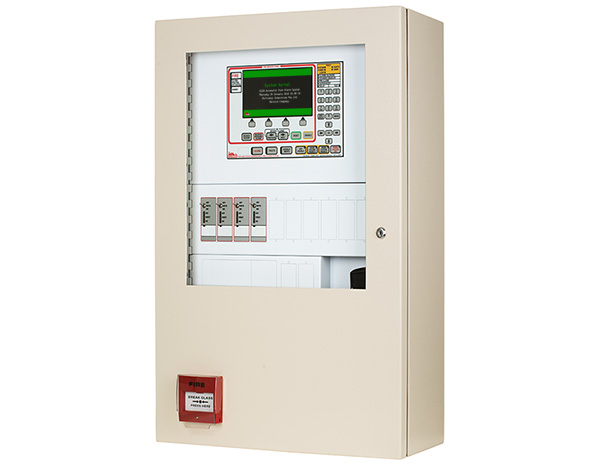News
F220 Fire Indicator Panel Reduces Unnecessary Fire Brigade Callouts
Tweet
Unwanted alarms present an important challenge for fire detection system designers. For example, according to the Western Australian Department of Fire and Emergency Services Annual Report 2015/16, “Less than two per cent of automated alarms are the result of a fire.” That’s an extreme case. However the problem is widespread. Data from other areas suggest that unwanted alarms account for between 85 percent and 95 percent of automatic fire brigade callouts.
Booming residential development in major Australian cities has highlighted the significance of unwanted alarms triggered by seemingly routine activities. Many day-to-day activities, particularly cooking, produce airborne particles capable of triggering smoke sensors. Some fire protection professionals prefer to call this type of alarm a “nuisance alarm”, rather than a “false alarm”. The smoke sensor has done its job: It has detected airborne particles. Often, the particles are genuine combustion products, such as smoke from toast or candles. Sometimes, the nuisance particles come from aerosol sprays such as hairspray or flyspray, or steam from showering or cooking.
A Brief Delay Overcomes Nuisance Alarms
Often an unnecessary fire brigade callout can be prevented by delaying the automatic alarm for a few minutes. This allows the nuisance condition to be cleared from the area around the smoke detector. If the alarm condition clears during the delay period, and if it does not come back, the Fire Indicator Panel (FIP) should not escalate to a fire alarm condition. However, if the alarm condition does not clear, or if a heat detector picks up an alarm condition in the same area, the panel should automatically sound the alarms and call the brigade.
The Pertronic F220 implements two types of delay facility: the Alarm Acknowledgement Facility (AAF), and the Alarm Delay Facility (ADF).
 Student apartment kitchens trigger many nuisance alarms. A Pertronic ADF system at Brisbane’s StudentOne accommodation complex dramatically reduced unwanted brigade callouts.
Student apartment kitchens trigger many nuisance alarms. A Pertronic ADF system at Brisbane’s StudentOne accommodation complex dramatically reduced unwanted brigade callouts.
Alarm Acknowledge Facility Allows Time to Investigate
The Alarm Acknowledgement Facility (AAF) is designed for residential single occupancy units (SOU). An alarm from a smoke sensor within an AAF unit triggers a local warning and starts the AAF delay period. If, during this period, someone presses the “Alarm Acknowledge” switch (located within the SOU), the Fire Indicator Panel initiates an “alarm investigation” delay. This second delay gives the occupants time to find and fix the cause of the alarm. For example, opening a window might overcome the problem.
Alarm Delay Facility is Fully Automatic
Also designed for residential SOUs, the Alarm Delay Facility (ADF) dispenses with the Alarm Acknowledge switch. Often, the Fire Indicator Panel controls equipment such as extraction fans, designed to clear nuisance conditions such as cooking fumes. If a smoke detector in an ADF unit detects an alarm condition, the FIP initiates a local warning within the SOU and starts the ADF delay period. The panel also initiates pre-programmed automatic responses such as running the extraction fan. If the smoke clears before the delay period expires and no other alarms are detected within the SOU, the panel will not call the fire brigade.
Real Fires Set Off the Alarm
The Pertronic F220’s AAF and ADF facilities will automatically initiate a fire alarm, trigger a building-wide evacuation, and call the fire brigade unless the smoke alarm clears during the relevant delay, and no other alarm conditions are detected within the same SOU.
Pertronic Alarm Delay Facility Has Been Well Proven
The F220’s Alarm Delay Facility incorporates lessons learned from many successful AAF and ADF facilities engineered with Pertronic equipment. The F220 is particularly well-suited to AAF and ADF applications because of its ability to respond appropriately to multi-criteria detectors such as the Acclimate, which combines heat and smoke sensors in a single detector unit. The F220 eliminates the need for separate heat and smoke detectors in each AAF or ADF unit.
A recent project in Brisbane demonstrates the real-world effectiveness of Pertronic ADF. The project involved the conversion of an office building into student apartments for a company called “StudentOne”. This type of facility tends to have a lot of unwanted alarms initiated by day-to day activities, especially in kitchens.
Installed by Brisbane Fire Protection Pty Ltd, the Pertronic F120A Fire Indicator Panel manages a separate ADF unit for each student apartment. If a smoke detector is triggered within an ADF unit, the FIP automatically activates a kitchen extractor fan to automatically clear smoke and cooking fumes, while sounding a local alarm within the affected unit. According to StudentOne facility manager Mike Lickerman, “We would have expected two or three falsies a month, but we’ve had none from SOUs covered by the Pertronic ADF.”
Effective unwanted alarm management saves money for facility operators such as StudentOne. That’s a good reason for implementing ADF. But there’s an even better reason.
People quickly learn to ignore an automatic fire alarm that frequently goes off unnecessarily. That’s potentially dangerous. In the event of a real alarm, people who routinely ignore the fire alarm could find themselves in real trouble.
Find out more about F220 Fire Indicator Panel
* Corrected 26 Sep 2019
 CLICK to CALL US NOW
CLICK to CALL US NOW
